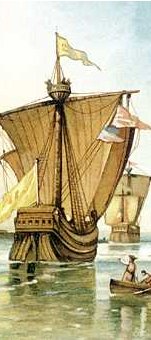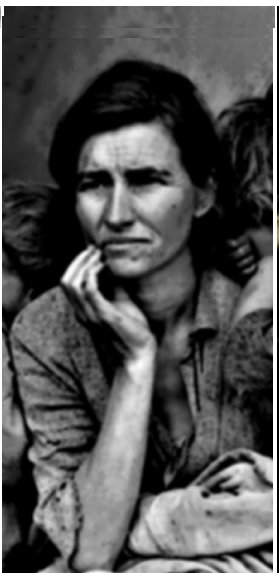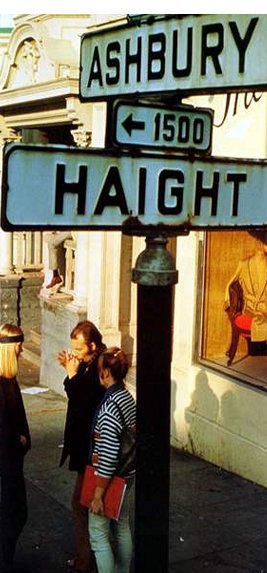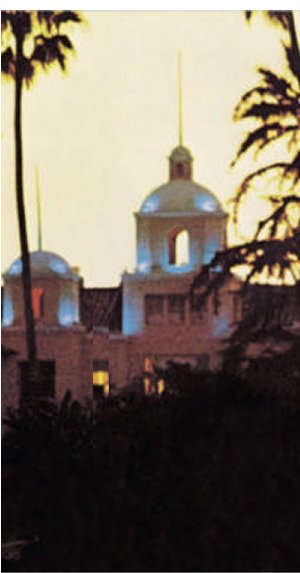A Decade of Psychedelic Decadence Jillian Pham
David Carle teaches biology at Cerro Coso Community College,
Eastern Sierra
College Center.
From 1982 to 2000, he and his wife shared the unit ranger position at the Mono
Lake Tufa State
Reserve, actively trying to protect the Eastern Sierra inland sea from
diversions into Los Angeles. Today,
he remains a freelance writer and is author of Water
and the California Dream (2000) and Mono
Lake Viewpoint (1992).
The 1960s witnessed the emergence
of the Counterculture¡Xa hodgepodge of unorthodoxy that resulted from the
earlier 1950s Beat Generation. Tom Wolfe¡¦s ¡§hysterical realism¡¨ book¡XThe
Electric Kool-Aid Acid Test¡Xcaptures the essence of the movement dominated
by hippies, LSD, and psychedelia.
Although the non-fiction¡Xyet surreal¡Xbook travels throughout America,
there¡¦s a significant emphasis upon California
as the epicenter of the cultural earthquake. Referred to as ¡§The Life¡Ka very Neon
Renaissance,¡¨ the psychedelic movement was nurtured by Ken Kesey¡Xthe focal
point of the book.1
Wolfe¡¦s book begins with the
narrator attempting to interview ¡§the biggest name in The Life, Kesey.¡¨ 2 The
narrator, a news reporter, was interested in Kesey¡¦s idea of an ¡§Acid
Graduation¡¨ that would transcend previous uses of the hallucinogenic drug known
as LSD. With only ten minutes to interview Kesey at the Mexican jail where he
was imprisoned, the reporter only garnered vague commentary from Kesey. After the interview, the narrator decided
to visit Kesey¡¦s followers, the Merry Pranksters, in chapter two. He found the
Pranksters living in an old San Francisco
warehouse. The people he encountered there dressed in clothes decorated with
designs of the American Flag. Ironically, the people dressed in American Flag
decorations were in no way patriotic to traditional nationalistic goals.
Instead, they focused on the latest fad of their own society¡XThe Acid
Graduation: a movement towards another method to obtain the mental high that
drugs create. Reminiscent to the
dystopian society of Aldous Huxley¡¦s Brave New World, a recording
constantly plays in the background of the Prankster¡¦s warehouse. The recording
acclimates and conditions the mind of followers into the liberal atmosphere of
the group. The narrator also meets
Kesey¡¦s children and his beautiful wife, Faye. With hardly any transition, the
story abruptly goes back to an earlier point in Kesey¡¦s life. Before 1965,
Kesey lived on Perry Lane,
an exclusive community of intellectual bohemians in the Stanford area. Eventually, Kesey meets Vic Lovell, an
individual of the Perry Lane
society who convinced Kesey to volunteer¡Xfor money¡Xat a clinical study lab that
experimented with new drugs. In the
lab, Kesey tried several drugs that became the addicting psychedelic drugs¡Xthe
foundation of The Life. Kesey
eventually develops an addiction for the drugs, and incorporated them into
numerous aspects of his life. He made the hallucinogenic drugs popular with his
Perry Lane friends, and
drug usage in the area began to increase. His experience as a medical ¡§guinea
pig¡¨ prompted him to write his first novel, One Flew Over the Cuckoo¡¦s Nest,
which elaborates upon the different state of mind experienced by the insane. As
a result, Kesey began to integrate the usage of drugs into his literary career.
To experience the mentality of the insane characters in his book, One Flew
Over the Cuckoo¡¦s Nest, Kesey took various drugs¡Xsuch as LSD¡Xto enter a
¡§deeper¡¨ state of mind.
Once the bohemian Perry
Lane community was threatened by a construction
company, Kesey decided to move to La Honda¡Xa area situated in the Santa
Cruz Mountains. Unlike Perry
Lane, La Honda was much more private and secluded.
This allowed Kesey to continue his use of drugs without the scrutiny of
outsiders. Kesey wanted to continue
sharing his experiences with his Perry Lane
friends and invited them often. With some of them, Kesey would become
intoxicated, record random sounds, and draw whatever came to mind. Kesey then bought a school bus ¡§in the
name of Intrepid Trips Inc.¡¨¡Xthe name of his filming company.3 Kesey
and the Merry Pranksters originally went on the trip to attend the New York
World Fair. However, the path they took deviated towards random places like the
American Deep South. Although they had a set destination in the beginning, the
actual trip reflected their preference for flexibility. Along the way, they
filmed themselves getting high in various places. One day, the bus was pulled
over by the police. Once the policemen saw some of the intoxicated bus members
madly rolling around in the brown grass, they decided to leave as soon as
possible without issuing a ticket. As a result of this incident, the Pranksters
¡§felt more immune than ever.¡¨4 The group reached the Deep
South on a hot day, and¡Xidle-minded from being on drugs¡Xunwittingly
swam in a segregated beach reserved for African Americans. They were met with hostility there and
white policemen had to breakup a mob surrounding the bus. When the Pranksters
finally reached New York, they
were confronted with enmity there as well.
In New York, the
Pranksters met the ¡§League for Spiritual Discovery.¡¨ The League practiced
mental and spiritual discovery via drugs. However, the League was ¡§one big
piece of uptight constipation¡¨ much more conservative than their western
counterparts¡Xthe Pranksters.5 The Pranksters headed back home to La
Honda after deciding not to deal with the hostility.
Once back in California,
the Pranksters faced an inspection by policemen who had a search warrant
allowing them to look through the La Honda cabin. Kesey was¡Xnot surprisingly¡Xfound guilty
for possession of illegal drugs. He
tried to fake suicide, but failed in the attempt. Then Kesey met the Hell¡¦s Angels, a
rough motorcycle club that appears to be the exact opposite of the pacifist
Merry Pranksters. The Hell¡¦s Angels immediately liked the charismatic Kesey
because they felt comfortable around him after hearing about his marijuana
possession story and the bust. Some time after meeting with the Hell¡¦s Angels,
Kesey was invited to speak at a Berkeley
anti-war rally against the Vietnam War.
Naturally, Kesey was also a part of the Free Speech Movement as well.
Later on, Kesey attended a Unitarian Conference where he was respected. The
people at the conference began referring to him as ¡§the Prophet Kesey¡¨ because
they agreed with his philosophy.6 Kesey and his group paralleled
Christ and his disciples. However,
Kesey denied having any relations with Christ because the Pranksters do not
associate religion with their mental atmosphere. Like the rest of the world, the
Pranksters also loved the Beatles. When the Beatles came to California,
the Pranksters created a welcome sign for them expecting that they would come
and visit the Prankster ¡§headquarters¡¨. The visit never happened, and many
Pranksters felt disappointed. However, Kesey did meet another celebrity. A
celebrity of the drug business: Owsley. As a result of this meeting, the band
¡§The Grateful Dead¡¨ and ¡§Acid Rock¡¨ formed.7 Kesey also got more
exposure to the New Left movement when the Vietnam Day Committee invited Kesey
to speak at a huge antiwar rally in 1965 at Berkeley.
Feeling a need to escape the
restraints of the American police, Kesey decided to take some of the Pranksters
to Mexico. The
remaining Pranksters stayed in California
to continue the Acid Tests, events aimed at exposing more people to drugs and
the psychedelic movement. Once Kesey left, Babbs became their new leader.
However, Babbs was unpopular because he enforced more rigorous rules. Unlike
Babbs, ¡§Kesey¡Xthe non-navigator¡Xmerely expressed a will and merely waited for
it to move forward in the Group Mind.¡¨8 Eventually, Babbs and the
rest of the Pranksters took a trip to Mexico
as well, but they were not openly welcomed there. The Pranksters stood out in their
brightly colored school bus and alarmed ¡§the women [who] hid their children
with their skirts.¡¨9 At this point, the Pranksters believed that
Kesey would never return to America,
from fear of imprisonment. However, Kesey does eventually return with his Acid
Graduation Plan later on. By this time, the Acid Tests were already established
in colleges. Now, the youths are known collectively as the ¡§Probation
Generation¡¨ as a result of imprisonment under numerous charges of drug
possession.10 As a promise to ensure his bail out of jail, Kesey
eventually acknowledges the harmful side-effects of taking LSD, and proposed to
¡§go beyond acid.¡¨11 This new idea was not well received by his
previous followers. The Acid
Graduation turned out to be below par to Kesey. Towards the end, only his closest
followers, the Merry Pranksters, remained. Everyone else eventually
disappeared. At this point, Kesey¡¦s
golden age ended. People were unwilling to sacrifice the drugged lifestyle that
led to addiction. Many also
disagreed with him because the underground LSD business was a major source of
income to powerfully wealthy¡Xbut illegal¡Xbusinesses. The power begins to shift
from Kesey and his groups to the hippies in Haight-Ashbury
who endorsed the continuation of LSD.
With his book, Wolfe attempted to
explain the rise and fall of the Merry Pranksters¡Xan influential group of the
1960s Counterculture. The author chronicled the life of another author, Ken
Kesey, to reveal the events that influenced literature at the time. The
author¡¦s intimate portrayal of the Merry Pranksters illuminated hippie
culture. As a result, both the
causes and effects of Prankster actions were revealed. Wolfe¡¦s thesis appeared
to be about the ironic conformity within an organization based upon
non-conformity with the rest of society. Although ¡§there wasn¡¦t supposed to be
any Prankster hierarchy,¡¨ one existed anyways.12 The group embraced
innovative individuality, but all of the Pranksters were pressured to take the
drugs because it was the pivotal aspect that united them. All Pranksters took
actions to an extremity as well. Although individuality was emphasized, members
constantly felt pressured to act differently from the rest of society. The
author also emphasized the temporary nature of power. In Kesey¡¦s case, power
evaporated once his philosophy ceased to please the majority.
Wolfe showed a bias perspective in
the book. He examined events from the perspective of the liberal hippie
characters, but never from the perspective of the conservative federal
officials. The author quotes Kesey proclaiming that the officials ¡§never took
LSD themselves and they had absolutely no comprehension and [the LSD
experience] couldn¡¦t be put into words anyway.¡¨13 This arrangement
evoked sympathy for the liberal side.
Wolfe¡¦s style of writing was intentionally informal and ambiguous at
times to portray the mental state of mind hippies experienced from being
intoxicated. His sentences tended to be incomplete and the language fitted with
the time period. The language reflected a mentality skewed by the usage of LSD.
However, it is debatable whether or not drugs were used by the author in the
process of writing. The book also fits under ¡§New Left¡¨ historiography for its
emphasis on the liberal side of Californian history in the 1960s.
Wolfe¡¦s book received
overwhelmingly positive reviews from critiques. According to Mike H. of Teen Ink Magazine, this book ¡§gives one
of the best descriptions of the beginning of the hippie revolution¡KWolfe really
captures the mood.¡¨14 By reading Wolfe¡¦s eccentric writing style,
the reader feels the mentally distorted aura of the characters depicted. Wolfe
uses the contemporary lingo of the characters to describe events in the words
of his characters. Sharkey¡¦s Book Review
noticed that The Electric Kool-Aid Acid Test is ¡§written with wild
abandon, neither the language, nor the story are refined¡Kthe style is
over-the-top, even by today¡¦s standards.¡¨15 Although Wolfe is
perfectly capable of writing normally, his choice of writing in an unorthodox
manner made his book truly unique. As a result of its writing style, this
non-fiction book stands a part from the sea of dry¡Xslow-paced¡Xhistory books.
The book was ingenious for fitting
under the genre of hysterical realism: ¡§typified by a strong contrast between elaborately absurd
prose, plotting, or characterization and careful detailed investigations of
real specific social phenomena.¡¨16 Although it is
non-fiction, the book remained interesting because it had a plot as well.
However, the story was hard to follow at first because it uses old hippie
language that is uncommon in the modern era. The book is also excessively
informal most of the time. Most importantly, the perspective is extremely bias
because only the liberal side is portrayed. Naturally, readers would lean
towards supporting the hippies because it was the only perspective available in
the book. Ironically, the book heroicized the hippies that ended up in jail.
The book is also controversial because it related the rebellious drug-taking
Kesey and his hippies with pious Jesus and his disciples. Although Kesey denied
any relations to relgions, observers noticed that there was a religious aura
prevalent amongst the Merry Pranksters. Kesey¡¦s group also focused upon
philosophy. In the Chapter ¡§A Miracle in Seven Days¡¨, Wolfe explained the
Prankster¡¦s belief of a system within a system. They believed that they were
all a part of a greater being. The Cause and Effect belief that the majority
believed in was disregarded by the Pranksters. Instead, the Kesey¡¦s group
believed that they were all connected to each other somehow. Oftentimes, they
would experience the same flow of thought when intoxicated together.
From this book, readers learn about
the Counterculture that started in California.
The heart of the movement began especially in Perry
Lane and evolved in La Honda. The Californian
movement influenced other areas of the nation via Kesey and the Merry
Pranksters while they were on the road trip to New York.
The book also mentioned other contemporary events in California
like the Free Speech Movement at Berkeley.
Although these innovative movements were seen throughout the country in the
1960s, California was the
revolutionary headquarters. The pivotal events began in California
and lasted there longest. The 1960s was also seen as a bridge between the
beatnik and hippie generations. As Kesey once said in a 1999 interview, ¡§I was too young to be a beatnik, and too old to be a hippie.¡¨17 Kesey was the
bridge.
California
also retained a unique approach to these movements. Unlike the American East, California
was much more liberal in its approach. The Californian Merry Pranksters
preferred loose authority that celebrated randomness. On the other hand, the
¡§League of Spiritual Discovery¡¨ of New York
preferred calm mental discovery. The two different approaches clashed on their
first encounter in New York.
Wolfe emphasizes California¡¦s
importance as the avant-garde creator that pioneered political independence.
The Californian Merry Pranksters did not simply endorse old¡Xbut
accepted¡Xbeliefs, they started a new way of life. The Californian hippies also
sought to see life from a new perspective and enjoyed elaborating upon
¡§metaphors for life itself.¡¨18 Their original intent for drug intake
was to view life from another perspective. The Merry Pranksters enjoyed
creative expression as well and decorated their homes¡XLa Honda and the Bus¡Xwith
Day-Glo paint. The Merry Prankster¡¦s long-term project was their film¡Xwhich
focused upon the drugged perspective of life. At his ¡§hill-country Versailles¡¨
in California, the king of the
psychedelic movement¡XKesey¡Xreigned with almost absolute power. All of the
followers respected him.19 Kesey eventually became a celebrity
nationwide. All Americans knew of the movement and its leader.
California
in the 1960s: a storm of change that resulted in eccentricity. Clinical studies resulted in a mass
movement of drugs and pyschedelia. The people were happy and high. Tom Wolfe
creates a more positive connotation for radicals by portraying them as the
heroes that created another option for those against conformity. In his book,
Wolfe portrays them as the normal minority amongst the odd majority. Wolfe gave
depth to historical characters normally portrayed in 2D. The main character, Ken Kesey was ¡§a
lightning rod [rather] than a seismograph.¡¨20 He preferred to be the
initiator not the observer. This mentality prevailed in California
during the 1960s.
1. Wolfe, Tom. The Electric Kool-Aid Acid Test. New
York: Bantam Books, 1999.
2. Wolfe, Tom. 12
3. Wolfe, Tom. 112
4. Wolfe, Tom. 70
5. Wolfe, Tom. 193
6. Wolfe, Tom. 213
7. Wolfe, Tom. 267
8. Wolfe, Tom. 308
9. Wolfe, Tom. 360
10. Wolfe, Tom. 330
11. Wolfe, Tom. 19
12. Wolfe, Tom. 330
13. Wolfe, Tom. 42
14. H., Mike. ¡§The Electric Kool-Aid Acid Test.¡¨ Teen Ink
Magazine October 2003. 03 June 2008.
<http://www.teenink.com/Poetry/article.php?link=Past/2003/October/17072.xml>
15. ¡§Sharkey¡¦s Book Review of¡KThe Electric Kool-Aid Acid
Test.¡¨ Mr. Sharkey¡¦s Home Page November 2001. 03 June 2008.
<http://www.mrsharkey.com/busbarn/acidtest/acidtest.htm>
16. ¡§Hysterical Realism.¡¨ Wikipedia. 02 June 2008.
<http://en.wikipedia.org/wiki/Hysterical_realism>
17. ¡§Ken Kesey.¡¨ Wikipedia. 02 June 2008. <http://en.wikipedia.org/wiki/Ken_Kesey>
18. Wolfe, Tom. 52
19. Wolfe, Tom. 172
20. Wolfe, Tom. 8










